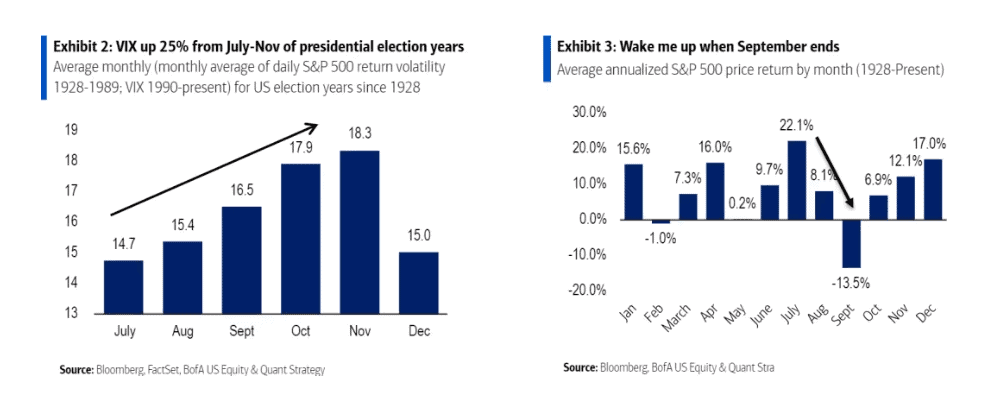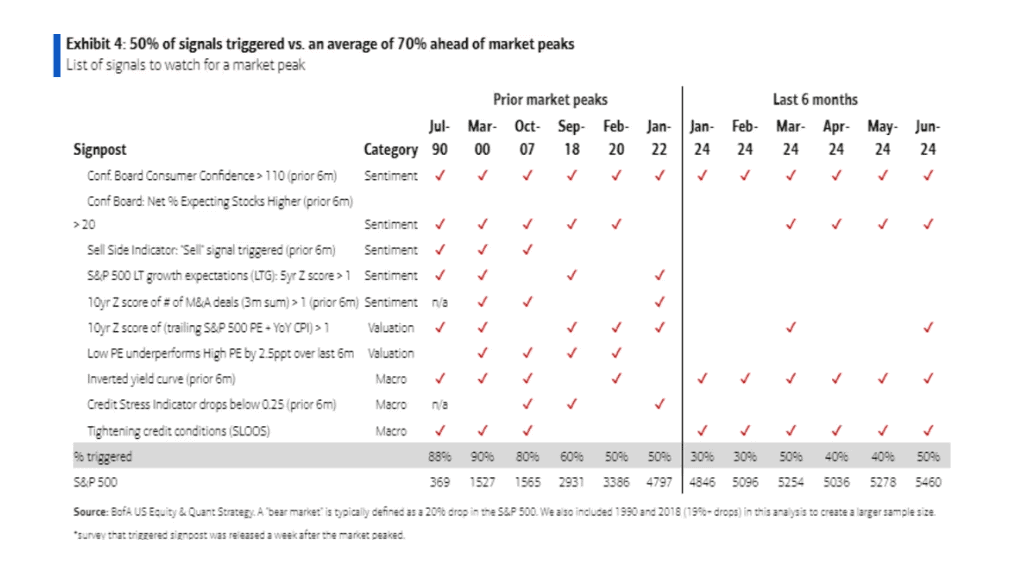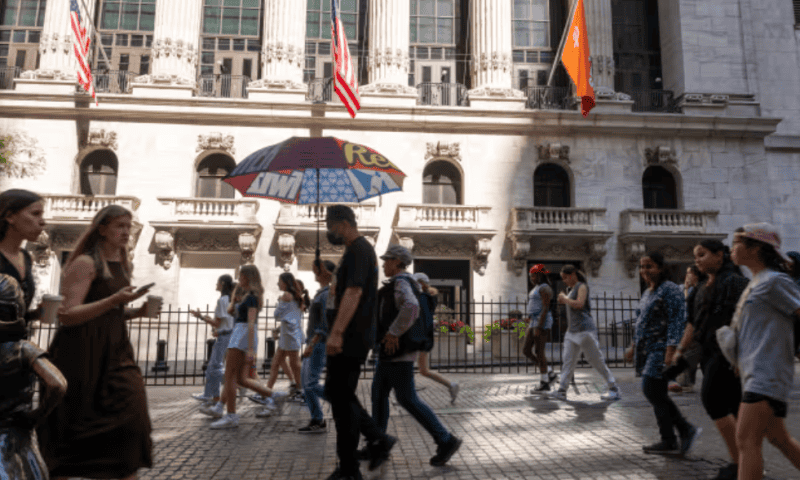Elevated near-term risk on seasonal trends and election volatility are offset by prospects for a rotation into dividend and capital-expenditure plays: BofA Global Research
The rally in the U.S. stock market might be due for a downshift in coming months as historical and seasonal trends bring elevated near-term risk to the S&P 500, according to BofA Global Research.
Since 1936, the large-cap S&P 500 index SPX 0.08% has experienced declines of 5% or greater three times per year on average, and it has suffered 10% corrections at least once per year, a team of BofA strategists led by Savita Subramanian, equity and quant strategist, said in a Monday note.
“We are thus overdue for a pullback,” the strategists wrote.
Recent wild swings in megacap technology stocks have put the S&P 500 and the Nasdaq Composite
COMP 0.07% on pace for their worst month since April as the so-called rotation trade kicked into gear. If the past is any guide, the turbulent times for U.S. equities may keep rolling into August and September — a period accompanied by seasonally weak S&P 500 returns, Subramanian and her team said.
Meanwhile, with the U.S. presidential elections on the horizon, the stock market may see increasing volatility. In election years since 1928, the Cboe Volatility Index, better known as the Vix or Wall Street’s “fear gauge,” has jumped by an average of 25% from July to November, which is “a risky backdrop for stocks,” according to BofA strategists (see charts below).
The Vix VIX 1.28% has surged 32% so far in July, on track for its largest monthly advance in over two years, according to FactSet data.

However, Subramanian and her team said investors are unlikely to see a “full-fledged” bear market this year. The chart below shows 10 macroeconomic triggers that have preceded some of the S&P 500 peaks dating back to 1990.
These signals suggest stocks “are a ways away” from a bear market, with 50% of the signals triggered versus an average of 70% ahead of prior S&P 500 peaks, the strategists said.

BofA Global Research’s sell-side indicator, a contrarian stock-market sentiment gauge that flashes a bullish signal when Wall Street is bearish, and vice versa, has now shifted to “neutral.”
“Sentiment shifted from deeply negative in 2023, which was bullish for stocks, to neutral today,” while positive earnings surprises from the megacap technology firms have ebbed, Subramanian and her team said.
Earlier last week, disappointing quarterly earnings from electric-vehicle maker Tesla Inc. TSLA 5.60% and Google parent Alphabet Corp. GOOG 1.45% GOOGL1.51% sparked a sharp selloff for tech stocks.
BofA strategists still see opportunities for strong returns within the S&P 500, but this time for dividend payers and “old-school” capital-expenditures beneficiaries. However, these stocks make up a smaller chunk of the large-cap index than do artificial-intelligence and tech-related names, they wrote.
U.S. stocks finished mostly higher on Monday as investors geared up for a busy week of corporate earnings and the Federal Reserve’s two-day policy meeting that starts July 30. The S&P 500 and the Nasdaq each gained 0.1% and the Dow Jones Industrial Average
DJIA -0.12% was off 0.1%, according to FactSet data.

